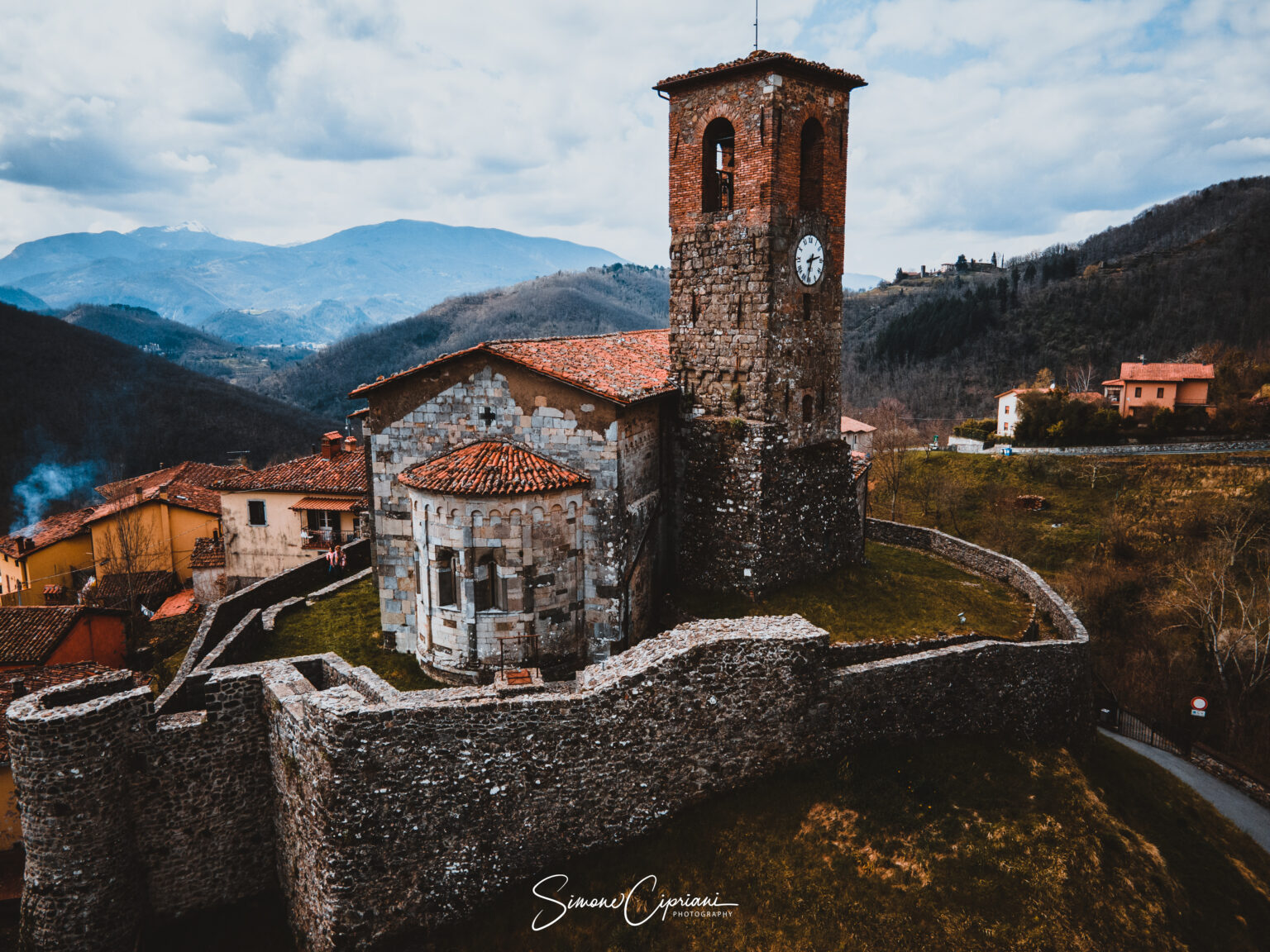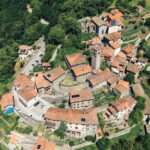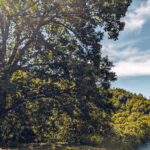The fortress of Ceserana consists of a single wall, equipped on the southern side with two powerful semicircular towers and another smaller one. Within the walls there is the Romanesque church of Sant'Andrea, a structure dating from the 12th-13th centuries but founded on an older building, presumably before 1000. The church, built of white stone, is embellished by a semicircular apse with pilasters and capitals decorated with floral and anthropomorphic motifs. Inside there are two wooden statues dating from the late 1300s, representing St. James (attributed to master Pietro d'Angelo della Quercia) and St. Andrew (attributed to master Antonio Pardini).
Next to the house of worship is the bell tower, which also served as a watchtower.
Belonging to the Rolandinghi since 996, the community of Ceserana was endowed with its own fortress most likely before 1048. The castle, however, held greater importance during the 12th century when the expansionist aims of the Commune of Lucca extended over Garfagnana. The strategic importance of the site, however, later convinced Paolo Guinigi, lord of Lucca, to include the castle in the number of those to be strengthened, restored, and fortified.
On May 10, 1430, the Parliament of Ceserana decided to submit to the Florentine Republic.
In 1451, however, Ceserana voluntarily gave itself to the Este family; in the agreements, Ceserana became the capital of a new Vicaria, the Terre Nuove, whose tax revenues were to be allocated in large part to the strengthening of the Rocca di Ceserana; the fortification was important as a last outpost toward one of the borders against the Lucchese.
Restorations and renovations followed one another over time, but the most important were completed in 1474 and 1616. We recall, for example, the construction of a new staircase for the access to the Rocca, which doubled the previous one, so as to keep access to the fortification separate from that of the church, where for some time, for security reasons, holy mass was no longer celebrated. Valuable architects of the Este family such as Antonio Vacchi and Pasio Pasi worked on the strengthening of the Rocca di Ceserana; the latter carried out a very ambitious project in 1615, which included the demolition of the Church of S. Andrea and its reconstruction elsewhere, fortunately not carried out.
In recent decades, other important restoration works has safeguarded and enhanced this architectural complex from its certain degradation.







